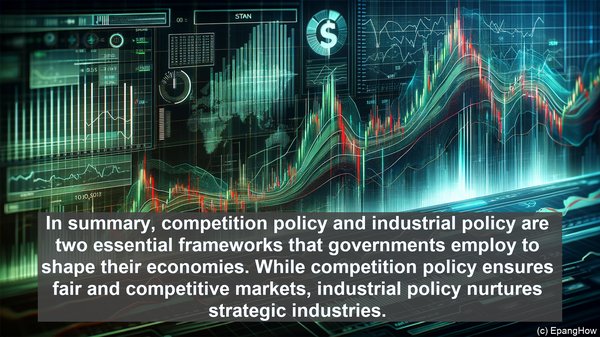Introduction: The Significance of Policy Frameworks
Hello everyone, and welcome to today’s article. When it comes to shaping economies, policy frameworks play a pivotal role. In this regard, two key frameworks often come into play: competition policy and industrial policy. While they may seem similar at first glance, they have distinct objectives and approaches. Today, we’ll explore these differences in detail.

Competition Policy: Fostering Fair and Competitive Markets
Competition policy primarily focuses on ensuring fair and competitive markets. It aims to prevent anti-competitive practices, such as monopolies or cartels, which can stifle innovation, limit consumer choices, and drive up prices. By promoting competition, this policy framework encourages efficiency, quality, and continuous improvement. It also safeguards the interests of consumers, ensuring they have access to a diverse range of products and services at reasonable prices.

Industrial Policy: Nurturing Strategic Industries and Economic Growth
On the other hand, industrial policy has a broader scope. It aims to strategically develop and support specific industries or sectors. This policy framework recognizes that certain industries can be vital for a nation’s economic growth, job creation, and technological advancement. It often involves targeted interventions, such as subsidies, tax incentives, or infrastructure development, to foster the growth of these industries. The objective is to enhance a nation’s competitiveness in the global market and ensure long-term economic sustainability.
Overlap and Synergy: Where the Policies Converge
While competition policy and industrial policy have distinct goals, there are instances where they intersect. For example, both policies recognize the importance of innovation. Competition policy encourages innovation by preventing the abuse of market power, while industrial policy may provide support to industries involved in research and development. Similarly, both policies aim to create a level playing field, albeit through different means. Competition policy does this by enforcing antitrust laws, while industrial policy may focus on building infrastructure or providing training to enhance the competitiveness of specific industries.
